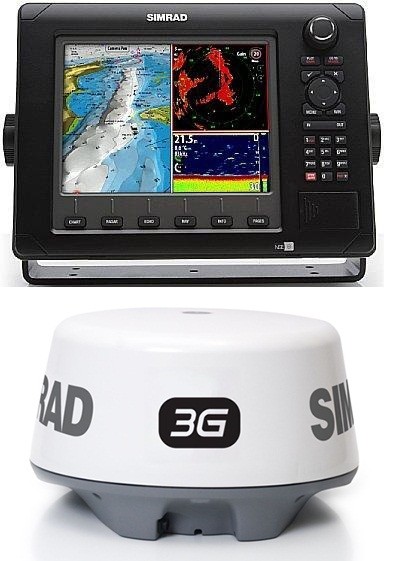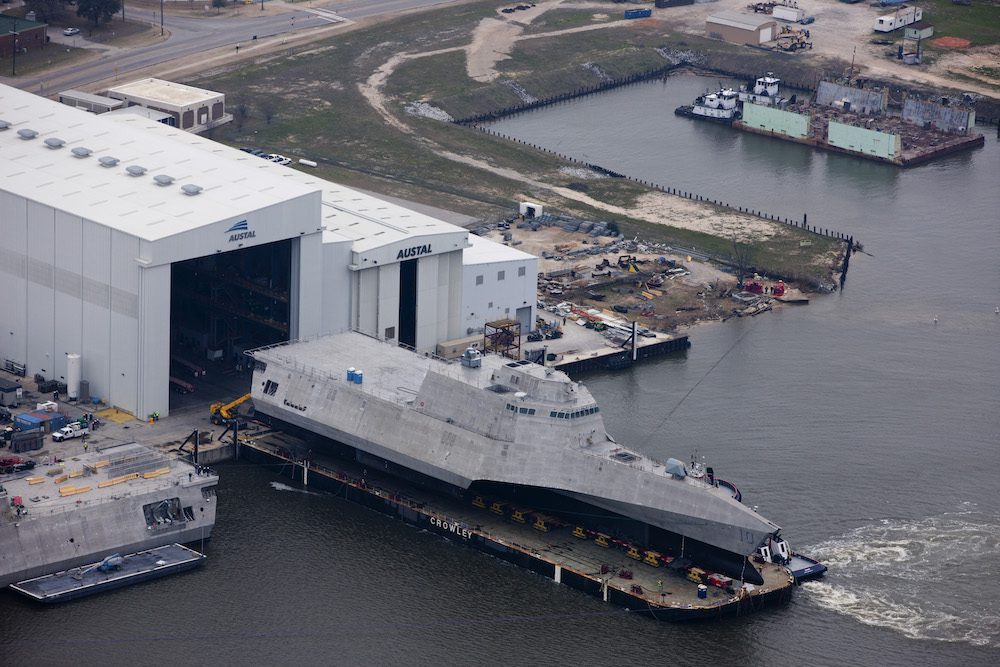Simrad 3g: gCaptain winner for best radar system.
What happens when the radar stops rotating? In the case of new radar technology the answer is better picture quality and navigation.
Simrad, Raymarine and Garmin radar interfaces.
During the past 12 months gCaptain has extensively tested three radar systems, each utilizing a radar antenna and a multifunction display (aka. MFD or chartplotter – the unit that displays the radar signal) and all had acceptable performance but gCaptain has chosen a clear winner depending on use:
Garmin takes the lead for utter simplicity. It’s broadband unit is the easiest to connect and simple to operate. In fairness to all the other, all three test units were simple to install, but Garmin was slightly easier. Garmin’s interface was also the simplest to use and provides the best 3d image out of the box, a feature favored by some boaters who want a heads up display that looks like the GPS device they have in their car. In fact some Garmin chair plotters can be taken from the car directly to the boat. But these features which will likely please first time boat owners, is likely to frustrate mariners. The Garmin maps look the least like traditional charts and the advanced features which us professional mariners rely on heavily, are absent or difficult to set up on the broadband radar Garmin units.
Are you a mariner who moonlights as a technology guru and loves to carry the latest gadgets that do amazing things? Then the Raymarine unit should be your first choice because the unit we tested, the E-series MFD – had the most “cool” features like tocuhscreens and the ability to connect wirelessly to your iPad or smart device. In fact, we found little not to like about the Raymarine except that some of it’s bleeding-edge features have yet to be perfected. For example, while the Raymarine can connect to an iPad, you can not control the radar from it. Basically the iPad serves only as a mobile display… Not a remote controller. And while we are sure Raymarine will improve to include better iPad features, by that time it’s competitors will probably offer them as well.
So if you are a landlubber and just bought your first boat we highly recommend the Garmin radar and if you are an experienced boater who spends just as much time in the Apple store as West Marine, then you will be pleased with the Raymarine unit but gCaptain’s readers are neither. This is the blog for professional mariners who use their boats in wide open but wind swept waters like the North Sea or confined waterways of the Magellan Straights. Simplicity and “cool” features are appreciated by professionals but not at the expense of durability and advanced, professional, features. The clear gCaptain winner is Simrad which had advanced features line parallel index lines and advanced ARPA.
Winner: Simrad NSE12
Broadband Radar Technology
We tested Raymarine HD and Garmin HD radars and both performed admirably. Target acquisition, clutter reduction and range all performed well out to about 20 nautical miles. But while they both worked well, there is nothing special I can say about their performance. Simrad’s 3G radar, however, was the exception.
The Raymarine and Garmin units are Traditional pulse radar, as found aboard nearly all large ships, which send out individual streams of pulses which are emitted in individual streams in one direction. To get 360 degree coverage the radar needs to rotate requiring you to wait a few seconds for the entire “picture” of your surroundings to refresh.
One type of large ship that doesn’t rely on pulse radar for precision navigation are Navy ships. They typically prefer continuous-wave radar, a system where a stable frequency continuous-wave radio energy is transmitted in all directions continuously. This system is more accurate, the Navy uses it to track small fast targets like missiles, has a higher definition picture and is relatively immune to interference from large stationary objects and slow moving clutter.
But merchant ships do not carry these Navy radar systems because they cost millions of dollars…. that is, until today.
Continuous wave, also known as broadband radars, have now arrived to the commercial market and, while it will take years for regulators to approve them for use aboard large ships, small units with price tags that will make purchasing agents smile have arrived to the yachting market from just one manufacturer: Simrad.
Why should boating professionals consider purchasing a Simrad 3g radar? Because in our test we found the Simrad unit lives up to it’s claim that 3G broadband radar offers superior target definition and separation in close quarters where traditional pulse radar is blind. The Broadband 3G Radar offers crystal-clear, highly detailed views of surroundings at a range scale down to 1/32 nautical miles, and marks objects within 2 meters of the boat. The new 3g radar also transmits 1/20,000 the power of traditional pulse radar, less than 1/10 the energy of a mobile phone, a fact that also makes it a safer, more environmentally friendly, alternative.
In short we found the new broadband radar superior to the competition in every way but don’t discard your old antennas just yet. While the 3G picture quality was incredible at ranges up to six nautical miles, it was just equal to the competition at 12 miles and underperformed at 24+.
Winner for best antenna: Raymarine and Garmin tie with the note that pilots who navigate in restricted or congested waters should augment their pulse units with a Garmin 3G.
Conclusion
We found the Simrad NSE with a Simrad 3g antenna to be the best radar system for the professional mariner working close to shore but if you work offshore and frequently set your radar at ranges beyond 12 nautical miles you should wait until Simrad offers a more powerful antenna before switching.
Unlock Exclusive Insights Today!
Join the gCaptain Club for curated content, insider opinions, and vibrant community discussions.

 Join The Club
Join The Club













